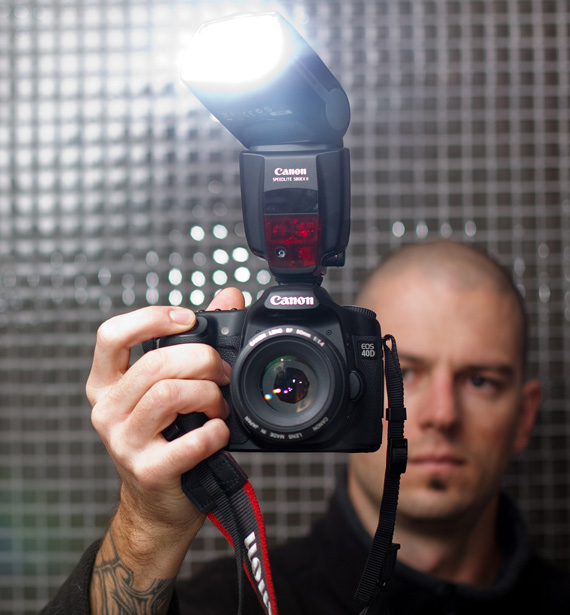We’ve all gone to sporting events and seen the audience cameras flashing two hundred or more yards distant from the action on the field. The truth is that they are all wasting their time and batteries. Sure, they will get some passable pictures, but that will be from the stadium lights. A camera flash cannot illuminate anything that is more than about 15 to 20 feet away. I’ll put that another way. The light from those flashing cameras cannot reach anywhere near to the action on the field. You may get some silhouettes of the backs of patrons sitting a few seats away.
There are many other occasions when amateur photographers waste effort and time trying to light up people and objects that are too far away from the flash. But the flash that is built in to the camera gives the amateur or newbie a feeling of safety and confidence that the resulting picture will be at least passable and not a black, unreadable blur. When I learned this fact some years ago, I kept my camera flash turned off all the time and tried to take my photographs either in available light or adding some other light source and controlling the shots by varying shutter speed and f-stops. Only when I thought the shot absolutely needed the flash did I turn it on. This is a rule I recommend strongly. It drags you out of your safety zone and makes you think about and learn the options for manual operation even with a point-and-shoot camera.
But there are other reasons for not using flash. Did you know that many professionals advise that all built-in flashes are poor? They more often than not result in horrible shadows, washed out faces, shiny hot spots, and highlights from reflective surfaces.
If you’re going to shoot with flash frequently, better switch to a DSLR camera and invest in an independent flash unit.
And there is one time when a built-in flash should never ever be used; when taking pictures of newborn babies. Even though the flash lasts a fraction of a second, a bright white xenon camera flash could seriously damage a newborn baby’s eyes, and it is not just a case of correcting red-eye electronically.
So, when should you turn on the flash (which from now on you will keep switched off)? This will surprise you. Turn it on in very bright sunlight to soften harsh shadows and at night or indoors when it is too dark.
You should also turn on flash to light up a subject in the foreground when there is a very bright background light. If not, you will shoot silhouettes, even though you are seeing details on the subject. One day, they may invent a camera that reads and interprets light just like our human eyes.
In the meantime learn when to use flash to take great pictures. How? Practice, analyze, learn; practice, analyze, learn; practice…
About the Author:
Kelvin Scoon is a retired advertising executive and publisher with a lifelong interest in photography. He’s an active amateur and buyer of professional photography for his advertising clients and publishing projects. Scoon runs Digital Photography Mastery, a one-stop-shop website for photographic equipment and supplies, training, and updated information on developments in the photographic industry.
Like This Article?
Don't Miss The Next One!
Join over 100,000 photographers of all experience levels who receive our free photography tips and articles to stay current:










I agree with Gary R Hook. Reference this article on https://www.babymed.com/blogs/jaclyn-stewart/are-camera-flashes-harmful-baby%E2%80%99s-eyes
Oh, for crying out loud.
Flash units will -not- hurt the eyes of a newborn. They are simply not strong enough. Please stop spreading this misinformation unless you have valid, verifiable scientific data to back up the assertion. Which, I’m sure, you don’t.
Just like the assertion that flash units damage paintings, this is a myth.
Although I’m an experienced photographer, I’m relatively new to receiving daily articles & tips about photography. And, this article was obviously posted for the inexperienced. I must say, many (apparently) experienced photographers appear to be some of the most arrogant folks ever (see Wendy’s post above “idiots”). Nikon photographers, no doubt. ;)
I agree a lot of idiots stupidly use their flash at distances where it does no good, but I’ve put a lot of cycles on my pop-up, especially once my D60 became my primary camera. Often, a little 1/32-strength burst is just what my little subjects need to kick the shutter up to hand-held speed. Come to think of it, my D60’s never worn an external flash, though I’ll occasionally hand-fire a flash on a long exposure for a poor man’s rear-synch.
The few times I have bothered to tell someone that their flash is doing no good, the answer has always been the same — “I don’t know how to turn the flash off.”
I have never bothered to then show them how, because I know they would not understand, and would later wonder “why I broke their camera, so that flash doesn’t work”… :(
Informative post . Thanks for sharing .